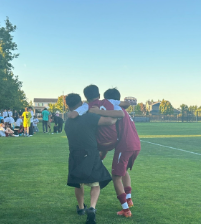In the world of soccer, injuries are an unfortunate but common aspect of the game. Among these, tears to the medial collateral ligament (MCL) are particularly prevalent. On Monday, September 16th, 2024, two boys, one from Forest Grove High School and another from Sandy High School, crashed into each other. One of the players sustained the crash, while the other was severely injured. As a student athletic trainer, witnessing a player getting this injury can be gut-wrenching. The MCL is crucial for stabilizing the knee, and its injury can have significant repercussions for both the player and the team. This article explores the mechanics of an MCL tear, the athletic trainer’s role in management, and the broader implications for recovery and performance.
What is an MCL & What is the severity of it?
Firstly, we must discuss how an MCL tear happens and the stages of a tear. An MCL tear typically occurs due to either a direct blow to the outside of the knee or an awkward twist during physical activities. In this case, the player attempted to evade a defender but was tackled from the side. A good example is back during the 2022 World Cup when Gabriel Jesus, a Brazilian player for the Arsenals faced a collision during a match versus Cameroon on December 2nd, resulting in a gnarly MCL tear. Jesus did undergo surgery and has fully recovered now. When the force applied to the outside of the knee can stretch or tear the MCL, leading to varying degrees of injury:
Grade 1: A mild sprain where the ligament is stretched but not torn. The player may experience some discomfort but can usually continue playing.
Grade 2: A partial tear of the MCL. This can cause more significant pain and swelling, often requiring the player to rest
Grade 3: A complete tear of the ligament. This results in substantial instability of the knee, accompanied by severe pain and swelling.
How Athletic Trainers become involved in the process
Upon witnessing a player go down after a collision, my mentor, Erin Russell & I immediately rushed to the scene. Once we approach the player, Erin begins an evaluation asking questions like, “How does it feel when I move your leg this way?” My job as a student athletic trainer is to ask what happened, and what their pain from a scale of 1-10, with 10 being a trip to the ER. A quick evaluation such as this is all Erin needs to determine the severity of the injury.
An MCL tear is a significant injury that can alter a soccer player’s season and career. From the moment the injury occurs to the player’s return to the field. After Erin’s assessment, she was certain he reached grade 3 tear and will unfortunately be out for the rest of the season. Thus, we quickly inform the parents & coaches of the player’s state, and a teammate of his along with his dad carries him along to the car to head off to the ER. An athletic trainer plays a vital role in the process of doing what’s best for the player, by understanding the intricacies of the injury, providing appropriate care, and supporting the athlete in a successful recovery. With the right guidance and commitment, many athletes can bounce back stronger, both physically and mentally, ready to take on the challenges of soccer once again.


























































































































